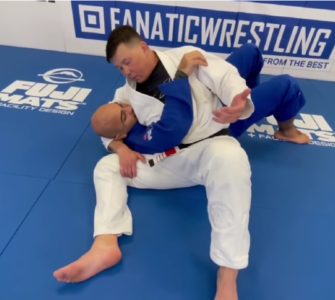Heelhooks are a powerful submission… As a matter of fact, they’re so powerful that they make some Jiujiteiros SCARED of them. Naturally, not of applying them, but of getting caught in one!
So, what ends up happening is that they freeze up any time someone catches them in training, which leads to either tapping out way too early, or to an injury because the tap came too late. Furthermore, this fear will leave some BJJ practitioners virtually phobic about competing in a Heelhook-allowed ruleset.
This is all way too much for any Jiujiteiro to come to terms with. Here’s the start of a solution for this fear.
HEELHOOKS AREN’T AS UNPREDICTABLE AS YOU THINK THEY ARE
The reason why people are so afraid of Heelhooks is because of the gruesome injuries that this submission can cause. While other injuries (such as that of a shoulder with the Kimura, for example) mainly threaten the muscles and the tendons, the Heelhook poses a dangerous threat to the ligaments of the knee.
It doesn’t take too many horror stories to hear about the torn ACL’s, about being incapable of training – nor walking – properly. It’s even worse when these stories are further reinforced with the notion of „heelhook injuries happening suddenly, without warning“.
However, this is absolutely not the case. While they may happen more quickly and while they do lead to gruesome injuries, you can still feel the pressure before anything bad happens!
In the case of an Outside Heelhook, there will be pressure applied to your ankle first before anything else happens. Furthermore, before your knee takes the pounding, it’ll be your ankle that will crack and pop. You will feel it in your ankle before in your knee! It’s gradual, so it doesn’t have to worry you one bit.
The Inside Heelhook knee injury, on the other hand, can happen a bit faster. However, you’ll still feel the pressure building up around your knee before it gets wrecked!
The main point is that Heelhooks are just like any other submission. You will feel pressure before you get injured. Which gives you enough time to tap.
HOW TO GET USED TO HEELHOOKS
Now that you know that Heelhooks have their own warning system – that they’re not going to make your knees explode out of nowhere – you can start getting used to them. That’s the very first step, and it needs to go hand-in-hand with learning the escape techniques!
The most important component of this step is to spend time in the position. What this means is that you’ll, for starters, drill defending Heelhooks. Pick an escape technique and work on it, non stop, as you’re practicing with your training partner. Then, once you’re comfortable enough with escaping during drills, it’s time to roll.
Make sure that you pick a reliable training partner beforehand; one that both knows how to Heelhook and that knows when to let go. Make it clear to them that you want to build your Heelhook confidence and defense skills. Let them know that they should go for your heel, whenever they notice an opportunity for it!
And then, when they get you, let them finish slowly. If you’re unable to defend, tap. But here’s the catch: as soon as you tap out, they need to ease off the pressure a bit – so that you can escape!
This will grant you additional moments under controllable, limited pressure. Which means that:
a) you’ll be more courageous when it comes to encountering Heelhooks in competition; and
b) you’ll know how to better defend yourself, simply because you spent more time practicing.

















